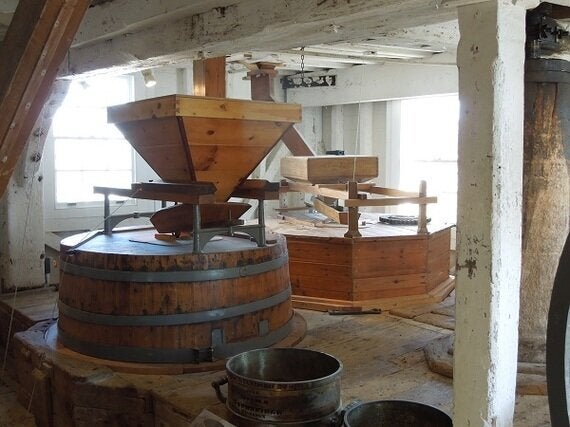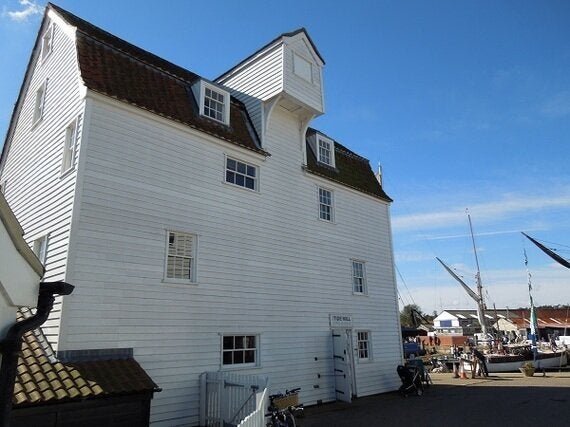
I've always had a fondness for water mills - it was my ambition as a child to one day live in one - but I'd never heard of a tide mill until I came to Suffolk. There's probably a good reason for that - it is thought there are only five left anywhere in the world that are in working order and still grinding wheat to make flour. Two of them are in the UK and one of them is in Woodbridge in Suffolk. It's a rare and lovely piece of industrial history.
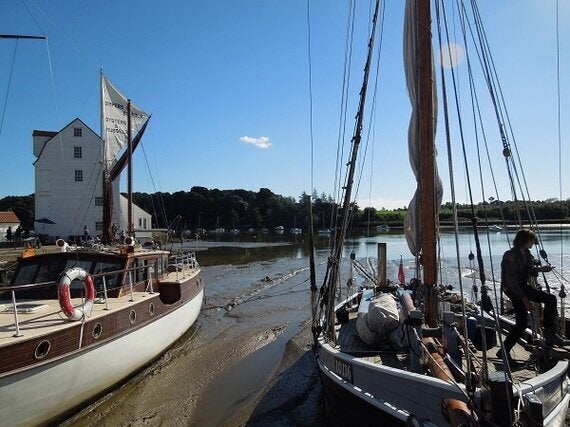
Tide mills were usually built on creeks a few miles from the coast. The pressure of the incoming tide would open specially-built sluice gates and fill the mill pond. As the tide fell, the pressure of the water would close the gates. The miller would open another set of sluices to the mill race and the water, rushing out, would turn the wheel.
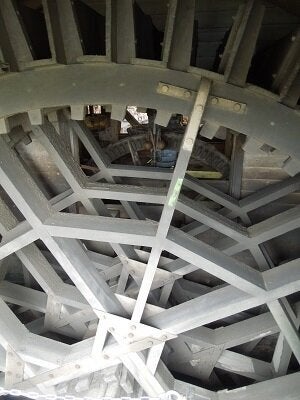
Woodbridge tide mill's original pond is now the town's marina and water is piped into a smaller holding pond. But its wheel is still powered by the tidal waters of the River Deben.
The present building dates back to 1793 but there's been a mill on the site since at least 1170, when it was run by one Baldwin of Ufford.
But by the late 1800s windmills and watermills were being put out of business by the much more efficient steam-powered roller mills. Woodbridge tide mill continued in operation until 1957, the last of its kind in the country.
That it survives at all is thanks to a local philanthropist, Jean Gardner, who bought the mill at auction in 1968, saving it from demolition. She raised money for its restoration and eventually handed it on to the town council, to be preserved in perpetuity for the benefit of the people of Woodbridge. Today the tide mill is run by a charitable trust.
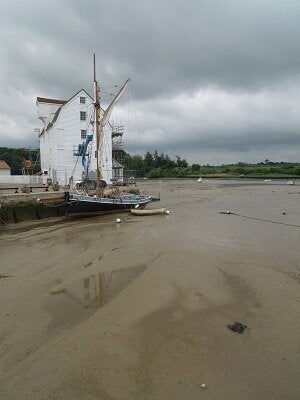
In spite of Mrs Gardner's efforts, by the early 2000s the mill was beginning to deteriorate again. A wooden mill on a an estuary, powered by salt water and with more salt in the air, is inevitably subject to decay.
The chairman of the Tide Mill Trust, Nigel Barratt, says the mill has always been dependent on visitor income which isn't enough to cover the £10-15 thousand pounds a year it costs to maintain.
So the Trust applied for a grant from the Heritage Lottery Fund and in 2011 the mill was closed again for a major overhaul.
"That was when we decided we had to bring it back into productive use," says Nigel. "Prior to that the machinery could turn but the stones hadn't been brought back into use. The prime objective of the rejuvenation was to actually mill flour again and that's what we're doing."
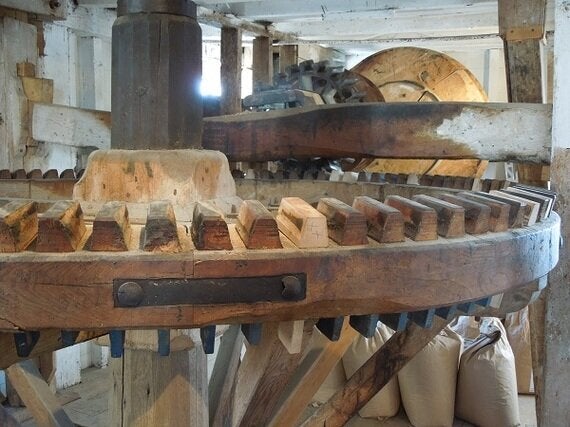
The weatherboarding was replaced, the roof mended, the pond and millrace were dredged and a new waterwheel was built nearby in Lowestoft. The wheelhouse and its walkway were completely rebuilt, the machinery overhauled and the millstones dressed.
It was a mammoth task but today it's in full working order again and a joy to watch when it's in operation, which thanks to its dedicated team of volunteers is on a regular basis throughout the summer.

Opening the sluice gate; filling the grain hopper; checking the flour quality
Nigel and other Trust members had to learn how to be millers and millwrights. None of them had prior experience. "We learned as we went along, through trial and error and practice," says Nigel. "I won't say I'm now a miller but I can mill. I won't say I'm a millwright but I'm learning an awful lot about millwrighting."
And he would love to see more visitors. "It would be no exaggeration to say you could count the number of operating tide mills producing flour for human consumption on the fingers of one hand. Two of them are in England and one of them is here, so it is fantastically important."
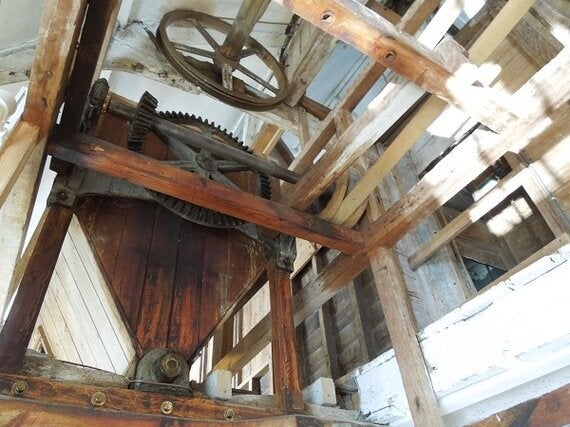
It is also fantastically beautiful, a working relic of a vanished age. You can watch the millers opening the sluice gates (it takes two of them), see the water pouring in to turn the wheel, marvel at the giant cogs that drive the millstones and sneeze as you watch the flour falling into sacks. And you can buy a bag of flour or a loaf of bread to take home.
I did both and I'll share a recipe next week. Meanwhile, if you're in the area, please do visit. You can check out the opening times and learn more here.
